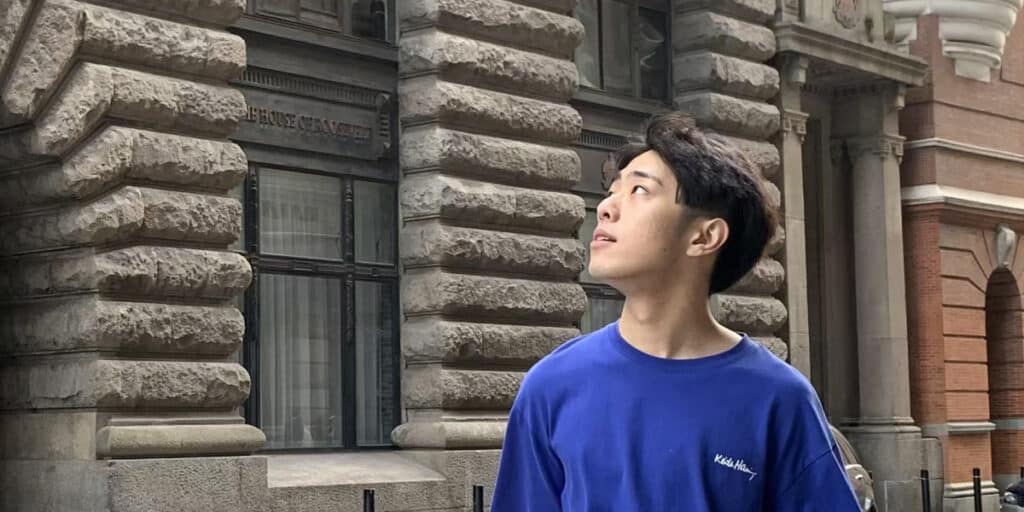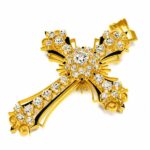By: Catherine Liu
In the ever-evolving world of design, few figures are as influential as Zeyuan Zhang, whose groundbreaking contributions to user experience (UX) design have garnered international recognition and industry-wide respect. In this exclusive interview, we explore Zeyuan’s journey, his design philosophy, and the transformative projects that have cemented his role as a global leader in UX design.

Q: Zeyuan, your career in UX design has been extraordinary. How did it all begin?
Zeyuan: My path into UX design was somewhat unexpected. I graduated from the University of Nottingham with a degree in mechanical engineering and product design—a combination of technical precision and creative exploration. While I enjoyed the engineering side, I found myself more drawn to design because it allowed me to engage directly with people. This led me to pursue a master’s in Human-Computer Interaction at University College London (UCL), where I combined computer science with psychology to build a well-rounded design approach.
Starting in UX wasn’t easy. I had little exposure, so I entered internal design competitions to showcase my abilities. Over time, I’ve won numerous awards, including the iF Design Award, Red Dot Design Award, International Design Awards (IDA), A’ Design Awards, New York Product Design Awards, European Design Awards, Golden Pin Design Awards, and French Design Awards. These honors have bolstered my reputation in the global design community.
Q: You’ve won some of the most prestigious design awards. What’s the key to your success?
Zeyuan: I’m often asked this, and the answer is innovation mindset. It’s about solving real problems through deep user research—understanding pain points others may overlook. The goal is to find gaps and propose unique solutions. Innovation comes from seeing what others don’t.
As a juror in design competitions, I’ve seen firsthand how crucial innovation is, accounting for nearly 40% of the judging criteria. When I served on the panel for the Orpetron Web Design Awards, it became clear that successful work starts with understanding the user’s needs deeply.
The design process must also be iterative. Solutions are refined through constant feedback and improvement, aligning with the ‘double diamond’ methodology. Many designers know this approach, but few fully apply it. My success lies in executing it rigorously and ensuring each project not only solves problems but pushes the boundaries of what’s possible.
Q: Tell us about one of your recent globally recognized projects.
Zeyuan: One recent project that gained significant attention is Tie-Dye Revival, a digital platform that revitalizes traditional tie-dye craftsmanship in rural China. The platform allows users to customize tie-dye products virtually, with artisans in rural areas completing the physical creation.
The idea came during a trip to a Bai minority village known for its tie-dye techniques, recognized as cultural heritage. However, these artisans were struggling economically due to limited access to consumers. By creating an app that connects them to modern customers, we not only preserved the craft but generated over $165,000 in revenue for the community. This project was recently recognized by the New York Product Design Awards, and we are scaling it to benefit more communities. It demonstrates how UX can bridge tradition and modernity while making a social impact.
Q: You’ve worked with major companies across industries. What challenges did you face in such a diverse career?
Zeyuan: I’ve been fortunate to work in industries like healthcare (Siemens Healthineers), automotive (BMW), and finance (Citi). Each sector has unique challenges, but the core principle remains the same: empathy. Whether designing for patients, technicians, or traders, understanding the user is key.
In healthcare, we had to learn about complex medical devices like CT and MRI machines to improve how technicians and patients interacted with them. That deep knowledge allowed us to enhance both the usability and the experience.
In finance, I’m currently focused on designing software for traders. Initially, the amount of data and complex formulas was daunting. But by understanding how traders operate and think, we identified inefficiencies in legacy systems. When clients tell us, “We never imagined this system could be so intuitive,” it makes all the effort worthwhile.
Q: What would you say is the most critical aspect of UX design?
Zeyuan: Empathy is the foundation of UX design. It goes beyond data and analytics—it’s about truly putting yourself in the user’s shoes and understanding their intentions, needs, and challenges. Only through this mindset can you create solutions that are both meaningful and impactful. While it seems simple in theory, achieving true empathy is a constant challenge that requires dedication.
Q: Finally, what advice would you give to aspiring designers who want to follow your path?
Zeyuan: My advice is to embrace challenges and step outside your comfort zone. The best designs come from deeply understanding your users’ needs, which often requires tackling unfamiliar problems. Also, embrace emerging technologies, particularly artificial intelligence. AI will play a transformative role in the next decade, and those who learn to work with it will lead the industry..
Published By: Aize Perez

















